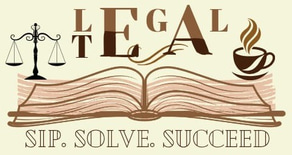Understanding the Doctrine of Constructive Notice in Corporate Law
Corporate law is full of concepts that help keep companies accountable and ensure smooth interactions with outsiders. One such important legal idea is the doctrine of constructive notice. While it may seem like a concept from a bygone era, especially in our digital age, this doctrine still plays a significant role in shaping corporate relationships and responsibilities.
S.M Vijay, 3rd year, BB.A; LL.B
4/24/20254 min read


In this article, we’ll explore what the doctrine of constructive notice actually means, where it came from, its legal backing in Indian law, how courts have interpreted it over time, and the real-world implications for those dealing with companies. We’ll also look at its criticisms and limitations, and how another key principle— the doctrine of indoor management—acts as a counterweight to its sometimes rigid application.
1. What Is the Doctrine of Constructive Notice?
The doctrine of constructive notice is a legal presumption in corporate law. It assumes that anyone interacting with a company has knowledge of its public documents, particularly the Memorandum of Association (MoA) and the Articles of Association (AoA). These are filed with the Registrar of Companies as per the Companies Act, 2013.
Even if someone hasn't actually read these documents, the law treats them as if they have. So, if someone enters into a contract with a company without checking whether the person they’re dealing with has the authority, they do so at their own risk. The idea is to protect companies from being bound by unauthorized acts of employees or agents.
2. Legal Foundation Under Indian Law
In India, the basis for this doctrine is laid out in the Companies Act, 2013. Key sections include:
Section 399 – This gives anyone the right to inspect documents filed with the Registrar and even take copies.
Sections 4 and 5 – These define and regulate what the MoA and AoA should contain.
Since these documents are public records, it’s expected that anyone engaging with a company has made themselves aware of their contents.
3. Historical Background
The doctrine originated from English common law and was introduced to encourage transparency and responsible business practices. The logic was straightforward: if important information about a company is
made public, it's up to outsiders to be informed before they make any commitments.
Originally, it placed the onus on outsiders to verify whether company officials had the authority to act on behalf of the firm, thus protecting companies from unauthorized or fraudulent actions.
4. How Indian Courts View It
Indian courts have reinforced this principle in multiple cases. A notable example is:
Kotla Venkataswamy v. Ramamurthy (AIR 1934 Mad 579)
In this case, a company official signed a document without having the authority to do so, as per the AoA. The court held that the person dealing with the company should have been aware of this restriction because the AoA is a public document. Hence, the company wasn’t held liable.
This case reaffirmed that ignorance of publicly available documents is not a valid excuse.
5. Real-World Application
In the real world, this doctrine means that any third party entering into a contract with a company should:
Go through the company’s MoA and AoA
Confirm that the person they are dealing with has the authority to act on behalf of the company
If they skip this step and the person turns out to be unauthorized, the contract might not be enforceable. For instance, if the AoA says that contracts above a certain amount need board approval, and someone signs such a contract without it, the company might not be held responsible.
6. Criticism and Drawbacks
While the doctrine serves a protective purpose, it hasn’t escaped criticism:
Unfair to Good-Faith Outsiders – It can be harsh on people who had no reason to doubt the authority of a company official.
Impractical in Modern Times – Given the volume of transactions today, it’s not always feasible to check company documents every time.
Against the Spirit of Good Faith – It contradicts the equitable principle that supports honest and innocent parties.
Critics argue that the doctrine is outdated in an age where digital access to information is fast and easy. Yet, since it’s still embedded in legislation and court decisions, it continues to be relevant.
7. Balancing It Out: The Doctrine of Indoor Management
To soften the rigidity of constructive notice, courts developed the doctrine of indoor management, also known as the Turquand Rule. It originated from:
Royal British Bank v. Turquand (1856) 6 E&B 327
This doctrine allows outsiders to presume that internal company procedures have been followed. They don’t need to check whether internal approvals were actually obtained, unless they have a reason to be suspicious.
In India, this principle was upheld in:
Lakshmi Ratan Cotton Mills Co. Ltd. v. J.K. Jute Mills Co. Ltd. [AIR 1957 All 311]
The ruling said that people dealing with a company can assume that internal rules and protocols have been properly observed.
8. Exceptions to Indoor Management
However, the doctrine of indoor management doesn’t apply in all cases. Key exceptions include:
Actual Knowledge – If the outsider actually knew something was wrong.
Suspicious Circumstances – If the situation should have prompted the person to dig deeper.
Forgery – The rule doesn’t cover forged documents or signatures.
In short, this doctrine helps—but it’s not a free pass for negligence.
9. Why It Still Matters in the Digital Age
Today, accessing corporate documents is easier than ever, thanks to platforms like the MCA (Ministry of Corporate Affairs) portal. This ease reinforces the idea behind constructive notice—people are expected to be aware because the information is right there.
At the same time, this convenience raises the bar for what counts as due diligence.
10. Final Thoughts
The doctrine of constructive notice remains a key pillar in corporate law. It encourages people to be cautious and informed when engaging with companies. While it may seem unfair or outdated, especially in our fastmoving business environment, it helps uphold the structure and integrity of corporate operations.
Because Every Legal Mind Deserves a Great Conversation.
Legaltea.in@gmail.com
+91 6284295492
MSME Certified
© 2025 Legal Tea. All rights reserved.


